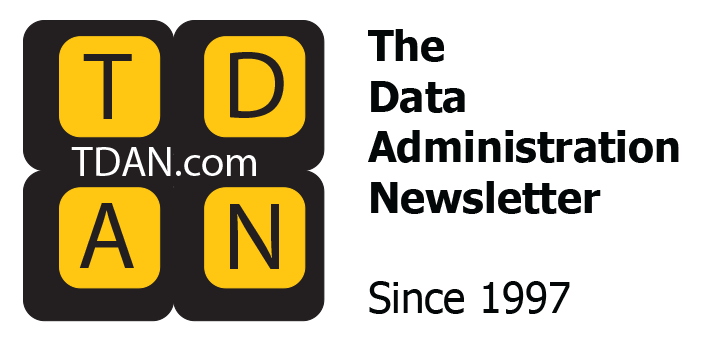
The enterprises that run our economy deploy business intelligence tools to put the power of analytics into the hands of business users and harness data to make decisions that provide a competitive advantage. But 10 years after the introduction of Microsoft Power BI, many organizations are still struggling to realize these benefits due to complexity and fragmentation in BI environments.
Across industries and companies, business intelligence is plagued by a common scourge: BI similarity.
This is what happens when different departments create reports, dashboards, and KPIs that overlap. The assets have similar names and like-minded goals, but the underlying data they rely on, the business intelligence tools where they were produced, and the calculations used to produce them are different.
In my experience as a data engineer with a large airline and the founder of a software company focused on analytics ops, I have found similarity to be the most consistent challenge holding back the success of BI at the enterprise level. But it is also one of the least talked-about issues in the industry. Few have a good solution for it, outside of manual, whack-a-mole fixes that no data engineer has the time to complete regularly. As a result, few understand the true impact of BI similarity across an organization, and how it introduces risk, operational challenges, and cost overruns that leadership didn’t see coming.
But make no mistake: BI similarity is the silent killer of analytics programs. Here are three major ways it undermines effectiveness and trust in data and analytics.
Wrong Data In, Bad Decisions Out
BI similarity has become such a big problem because it is difficult to detect. The differences between duplicate records aren’t obvious. There may be two identically named reports with the same goals, but one Power BI report uses outdated data, while another report is accurate and up to date. They might rely on different data models to reach their conclusions. Plus, similarity is often the result of an honest mistake. Teams didn’t set out to produce the same Power BI report — they simply lacked visibility into what another team was doing.
But the impact goes far beyond a record-keeping headache. Consider an example from the high-stakes world of aviation. One airline relied on a business intelligence report to submit mandatory delay filings to the Federal Aviation Administration. Over time, near-identical dashboards proliferated, each with slightly altered logic. When new team members took over, they mistakenly used a copy that contained a flawed data model. The result: inaccurate regulatory submissions and the risk of financial penalties.
Division and Mistrust Increases Risk
When different teams present similar reports that reach different conclusions, it’s a recipe for chaos. Teams argue about the source of truth. Management questions data accuracy, and the value of data and analytics as a whole. Amid all of the fighting, no one makes a decision.
Worse, the next time teams come together to present data, it will cause more alarm than action.
Managers will fear further discord, and they will be more likely to distrust the data that is being presented.
An example from the healthcare sector illustrates the stakes. A clinical research team tracking trial dropout rates built a report in Power BI, while another department relied on a near-duplicate report in Tableau. The difference? One report was based on outdated patient cohorts.
This wasn’t just a matter of a data discrepancy. The conflicting insights in duplicate reports jeopardized compliance and risked undermining critical protocol adjustments.
Similarity doesn’t just divide. It jeopardizes crucial initiatives.
Redundancy and Errors Drain Resources
Usually, similarity is only discovered after it causes a problem. Teams act fast to remove duplicates. But by that time, there is already a cost.
Even outside highly regulated industries, duplication can have staggering financial consequences. In one case, an operations team forecasted component demand using one dashboard while sales used another. The mismatch led to a $3 million over-order in inventory.
This tied up valuable capital, overfilled warehouses, and delayed investment in higher-margin product lines.
Meanwhile, the dashboards required separate IT infrastructure to operate and maintain. So not only are the reports duplicated, but so is the data storage and compute resource consumption, adding another layer of unnecessary cost and management overhead.
The Broken Promise of Self-Service
The reason similarity is such a profound problem does not lie with data alone. Rather, the cause can be found in the difference between the self-service analytics we were promised, and the reality that we now find.
By providing self-service access to analytics tools like Power BI and Tableau, organizations are allowing anyone to create a metric, KPI, or a Microsoft Power BI dashboard. But the popularity of these tools brought a new challenge. Large organizations have multiple BI tools, accessed by hundreds of users, and they don’t track all of the reports.
With so much data and so many reports, there’s a need for increased data governance across tools, such as Power BI, Microsoft Fabric, Tableau, and Qlik. This exists at the data warehouse layer. It must now be applied to the consumption layer where BI tools sit. After all, this is where most business users access data. Organizations can use this governance to develop a set of reports that are an organization’s gold standard. With further advances in AI that provide more automation in report and dashboard creation, it will become more important to have guardrails around BI environments that can separate the right data from the stale and inaccurate.
Confronting BI similarity is one of the first and most important steps an organization can take to introduce real governance for business intelligence. It will reduce waste and save money. Most importantly, addressing Similarity will ensure that the millions invested in BI and analytics actually deliver on their promise: sharper decisions, faster execution, and stronger alignment across the enterprise.
